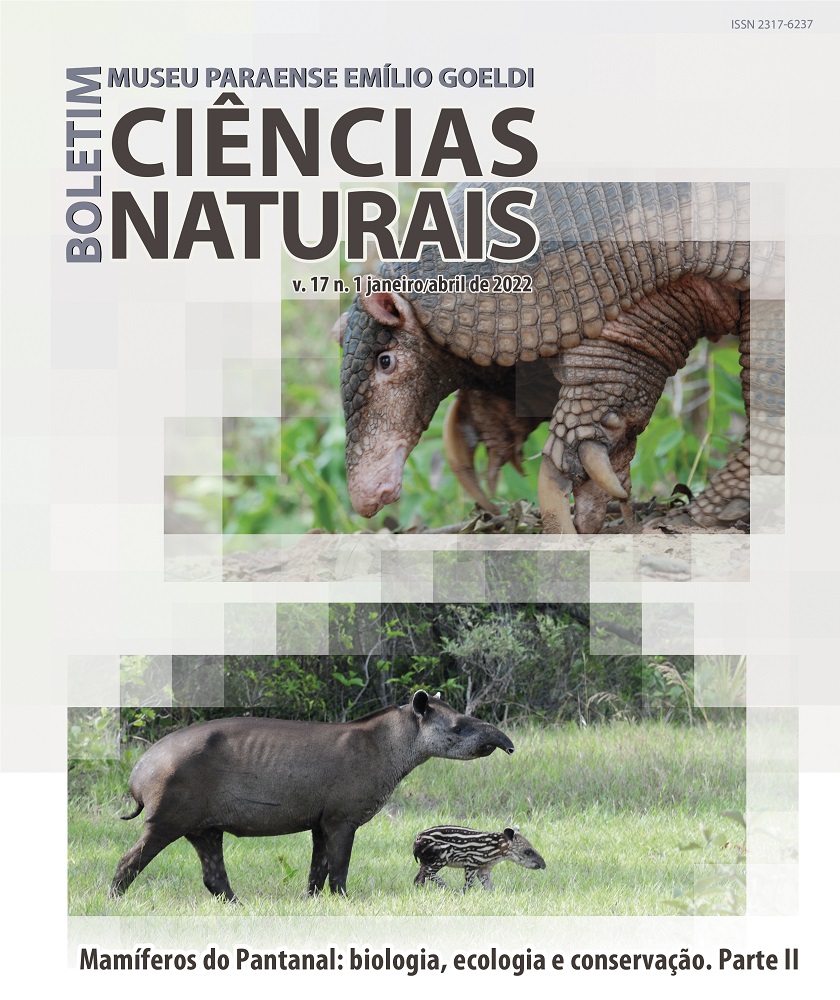What do we know about the armadillos of the Pantanal? Review of knowledge about their ecology, biology, morphology, health, conservation, distribution and study methods
DOI:
https://doi.org/10.46357/bcnaturais.v17i1.834Keywords:
Cingulata, Xenarthra, Natural History, Health, Ecology, DistributionAbstract
Xenarthra has two orders, six families, 14 genus and 38 living species. Cingulata (armadillos) contains 22 of the xenarthran species, six of which are found in the Pantanal (Dasypus novemcinctus, Cabassous tatouay, C. squamicaudis, Tolypeutes matacus, Euphractus sexcinctus, and Priodontes maximus). Armadillos differ from other mammals in having a carapace formed by articulated bone plates that, like a shield, covers their head and back. In this article, we draw on an extensive literature review and decades of work by the authors to describe the state of knowledge about the ecology, biology, morphology, health, conservation status and distribution of armadillos in the Pantanal. To support future work with the species, we also describe best practices for the capture and handling (e.g., anesthesia and biological sample collection) of the species in the field. Despite the increase in the number of studies, there are still several information gaps about the ecology and biology of armadillos in Pantanal. Therefore, we hope that the information and methods described here will serve as an incentive and foundation for the development of new studies, increasing our knowledge about these species in the Pantanal region and allowing the planning of efficient conservation strategies.
Downloads
Published
Issue
Section
License
Publication means fully assigning and transferring all copyrights of the manuscript to the journal. The Liability Statement and
Assignment of Copyrights will be enclosed with the notice of acceptance. All the authors must sign the document and return it to the journal.






